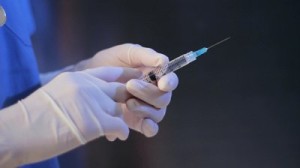New Smart Syringe Could Save Lives And Money
A new smart syringe has been endorsed by the World Health Organisation as a potentially lifesaving piece of equipment. What’s more it could be an effective method of stopping the spread of diseases in countries around the world. More than 16 billion injections are administered annually and the reuse of needles leads to more than two million new cases of HIV and hepatitis each and every year.
The new smart syringe prevents the plunger from being pulled back after an injection so that it cannot be reused. If someone tried to reuse the syringe, it simply breaks. It is a more expensive piece of equipment but the WHO claims it will be cheaper than treating the diseases in the long term.
Dr Selma Khamassi, head of the WHO team for injection safety, told BBC News “This will hopefully eliminate the 1.7 million new hepatitis B cases, the 300,000 new hepatitis C cases and the 35,000 new HIV cases every year and all those we don’t have figures for such as Ebola and Marburg.” She went on to insist that injection safety, in her opinion, was the most cost-effective way to prevent diseases.
“If we compare the price of [the smart syringe] to the cost of treatment for an HIV case, or a hep C case, there is no comparison.”
Smart Syryinge is Cost-Effective
Standard syringes cost approximately 1.3 pence while the new smart syringe would cost around 3 pence. This seems like a small increase but, when scaled up to 16 billion injections, the difference becomes significant. However, the WHO is calling on industry to expand production and find ways of making the smart syringe more affordable.
The WHO hopes that by 2020, the smart syringe will be in full circulation and that there will also be the development of sheathed needles that will prevent health workers accidentally pricking themselves on used needles.
Marc Koska, inventor of the so-called auto-disable syringe, told the BBC “it’s totally, totally possible.”
“We’ve already done this with immunisation, which represents less than 10% of the injections given in the developing world, and that has been a fantastic success.
“Now we’re targeting the 90% of what we call curative injections.”
There have been many developments towards safer needle practise, including needles that change colour after use, but this seems to be the first that has been backed so surely by the WHO. Here’s hoping that leading health organizations and charities back this campaign with the same urgency and that the aim to have them in full global circulation by 2020 will be achieved, avoiding further spread of the world’s most infectious diseases.



